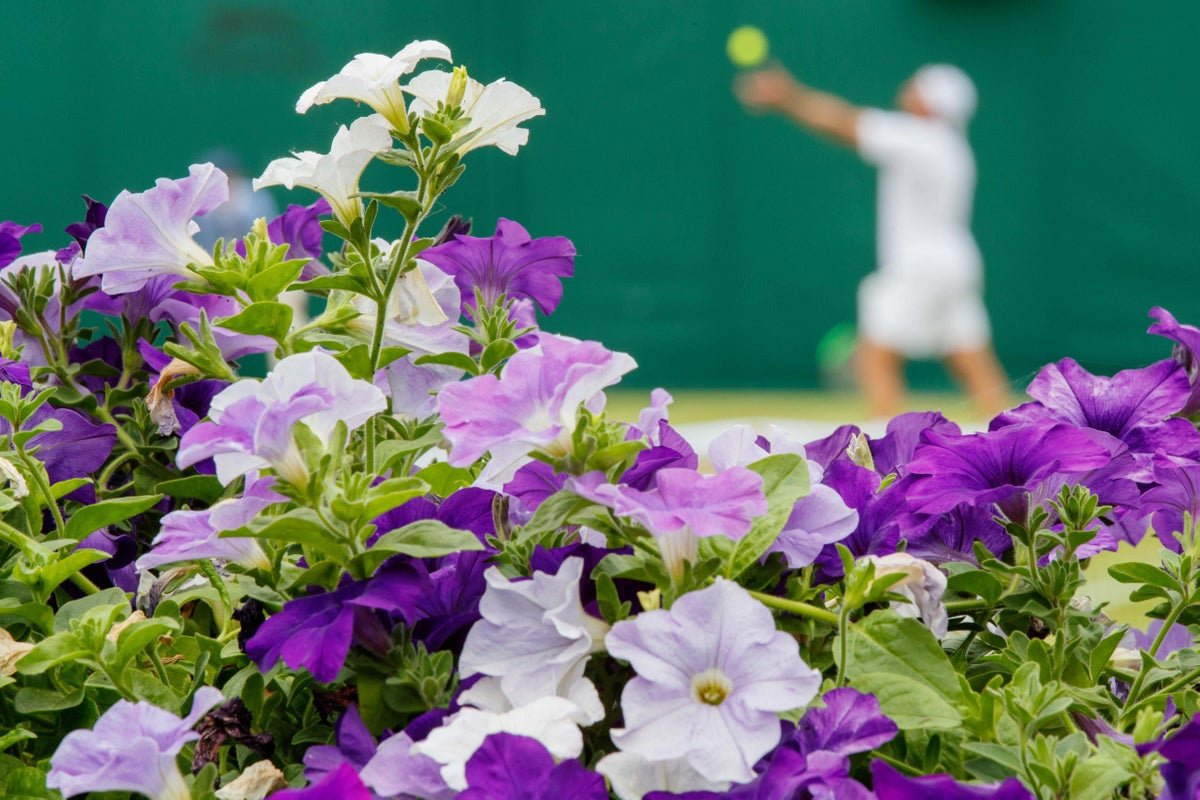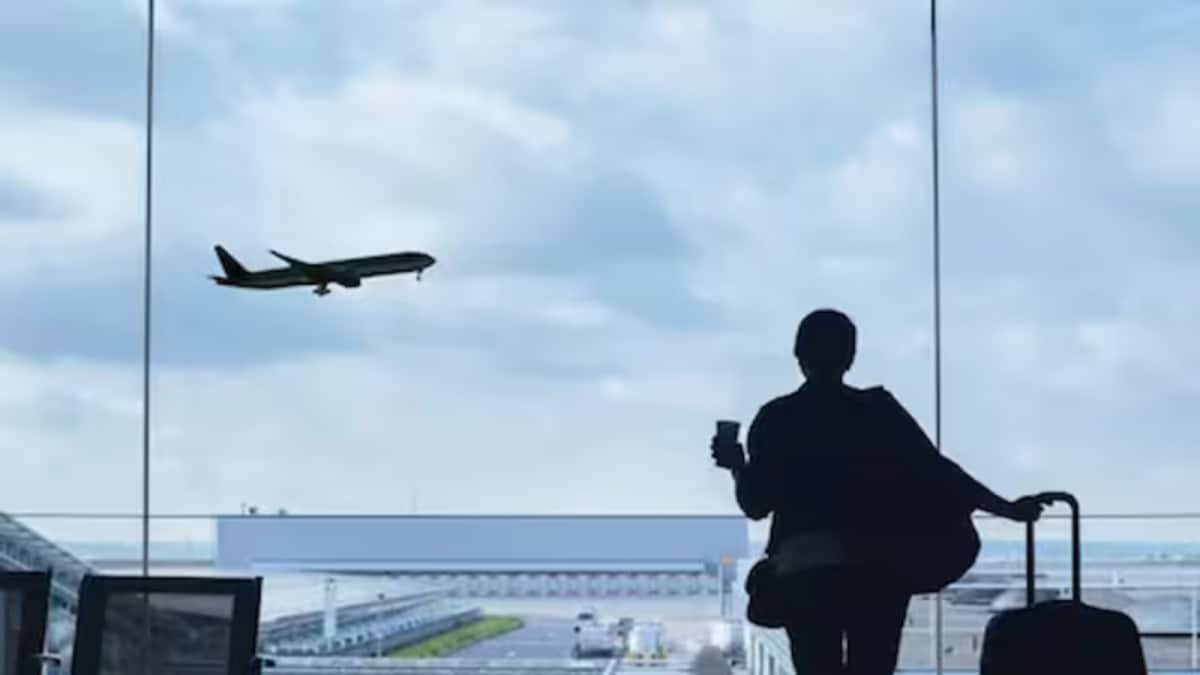Every summer, the grounds at the All England Lawn Tennis & Croquet Club are awash with blooms, from the 5,000 hydrangeas throughout the grounds to more than 12,000 petunias in shades of blue and white used in more than 200 hanging baskets and 1,700 troughs around the show courts.
A myriad of scented roses cover the iconic Rose Arch, while birds nest in the Boston ivy scaling the walls at the front of the Centre Court and in the living walls containing 15 different plants, including heucheras, hebes, euonymus and ivy, either side of the screen of No 1 Court.
The club has recently installed beehives in the Indoor Tennis Centre and bird boxes on site with live camera feeds.
View this post on Instagram
Head gardener Martyn Falconer, who has worked there for 26 years, says that the traditional style has always been English garden, but that has evolved to become more sustainable.
Perennials including verbenas, echinaceas, salvias and ornamental grasses have become more prevalent as the club looks for alternatives to bedding plants while still serving up a magnificent display.
“In those earlier days we used a lot of annuals, but there’s been more of a shift away from that into a more herbaceous perennial plant-out, using the English garden-style planting rather than lots of bedding to get the wow factor.
“Although we still bring a lot of stuff in that’s for containers and pop-up gardens, there is more of a standard palette planted in the ground,” says Falconer, who with his 12 full-time staff (plus 10 more in the lead up to the Championships) manages the 42 acres through the seasons.
View this post on Instagram
Of course, the build-up to the tournament is hugely busy, as Falconer and his team create the magnificent flowering vistas throughout the grounds. Around 27,000 plants are brought in specifically for the Championships.
Every day of the tournament they are out there at 5am “titivating” containers and borders, deadheading, watering bits which look a little dry despite the automatic irrigation system and replacing plants not looking their best with a succession of replacements waiting in the wings.
By the time visitors enter, the gardeners have magically faded into the background, leaving the floral displays to dazzle.
After the Championships, a selection of plants are donated to local charities within Merton and Wandsworth. Staff members can also buy plants, with all proceeds going to the Wimbledon Foundation.
Getting the Wimbledon look in your own home shouldn’t be too difficult, if you use their trademark plants and classic blue and white colour schemes, he says.
Hydrangeas
View this post on Instagram
The most iconic plant at Wimbledon is probably the least sustainable, given the huge amount of water it requires, he acknowledges, but once it is well established it will tolerate slightly less TLC.
“Your soil type will determine the colour of your hydrangea. Just be aware if you buy a blue hydrangea and you don’t have acidic soil, that colour will change.”
You can buy hydrangea feed which will help your plant turn blue again.
Wimbledon uses the ‘Dance’ collection. “Last year we had the ‘Deep Purple Dance’ in the members’ balcony. This year we’ve got the ‘Blue Boogie Woogie’ and the ‘Red Reggae’ and a lovely one called ‘Magical Amethyst’ which changes through four stages of flowering, scattered around the site.” All are widely available in garden centres and online.
You could plant a hydrangea in a pot with blue and white petunias around the edge, to get the Wimbledon look, he suggests.
Petunias
“All the baskets are just petunias. The modules that go around the balcony planters around Centre Court are all sky blue and white, just simple, and petunias are readily available in good garden centres.
“I would suggest regular feeding, deadheading and watering, but don’t overwater them. They don’t mind going a little bit dry but don’t let them dry out completely.”
Roses
The Rose Arbour at Wimbledon is permanently planted with ‘Madame Alfred Carrière’ and ‘New Dawn’ climbing roses, which would be easy to plant if you want to cover fencing, trellises or an arbour at home, he suggests.
“‘Madame Alfred Carrière’ starts off quite pink and gets paler as it grows on, while ‘New Dawn’ has a whiter flower. They are very fragrant and I was down there yesterday and could smell that lovely scent.”
Herbaceous borders
View this post on Instagram
Borders which are reflective of Wimbledon would be predominantly blue and green, so again relatively simple. For height, he uses Verbena bonariensis, which is also a magnet for pollinating insects, ornamental grasses for structure, including miscanthus and Stipa tenuissima, echinaceas and salvias such as Salvia ‘Amistad’.
Pastel pink foxgloves and delphiniums could also be incorporated for pops of colour, and shrub roses such as Rosa ‘Iceberg’ added at a lower level.
Leaf textures
View this post on Instagram
“We use a lot of different leaf texture as well to add contrast, including pittosporums and Fatsia japonica under the balcony to give that nice glossy, big leaf type.
“We are not always looking at flowers alone, so we are using some variegated foliage to break it up.”
The Wimbledon Championships run from June 30 to July 13, 2025
#Wimbledon #garden



